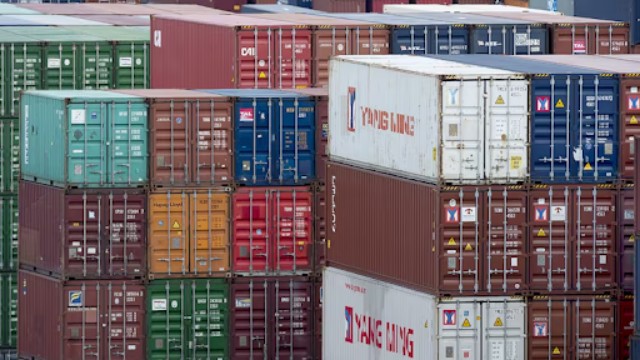
Aritzia is pictured in Vancouver on March 29, 2023. The Vancouver-based retailer is in the midst of a major U.S. expansion plan, but has run into challenges in the last year and in its latest quarter saw income drop 39 per cent. (Ben Nelms/CBC)
Aritzia, the Vancouver-based apparel retailer, experienced a stock surge of over 20% on Thursday morning following improved financial performance, although experts caution that the company is still facing challenges after a tough year. While the latest quarterly earnings, announced after the markets closed on Wednesday, show improvement compared to the last two quarters, Aritzia has not fully recovered to its earlier stellar performance.
The clothing company revealed a 39% decline in net income for the third quarter compared to the same period last year. Despite this, net revenue rose to $653.5 million, up from $624.6 million a year earlier. Analyst Doug Stephens, founder of Retail Prophet, suggests that Aritzia, while a strong brand, is not invincible.
At the beginning of 2023, Aritzia was in a strong position, posting its highest quarterly net revenue on record, largely driven by its increasing popularity in the U.S. Now, the company is banking on U.S. expansion to regain momentum. Aritzia plans to open eight to 10 new U.S. stores annually in the next few years, identifying over 100 possible locations. However, analysts warn that international growth may not solve all their challenges.
CEO Jennifer Wong remains optimistic, highlighting progress in clearing excess inventory and promising a diverse range of new products for the upcoming season to attract customers back into stores. CIBC analyst Mark Petrie rates Aritzia as an "outperformer" and notes its resilience in a cautious consumer environment. However, the brand's ability to recapture its lost sense of "newness" will be a crucial test in the upcoming quarter.
Aritzia has faced difficulties, including missed opportunities in getting new products into stores, a challenging consumer environment, and excess merchandise leading to increased markdowns. The brand's recent online "archive sale" aimed at clearing excess inventory was seen as successful, but experts caution against frequent repetition. Economic headwinds, such as weakening purchasing power, ongoing inflation, and high debt payments, are expected to persist, according to RBC economists, with improvement not anticipated until the second half of 2024.















